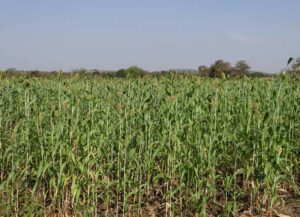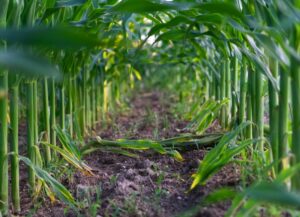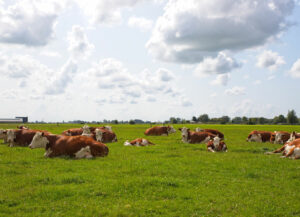Fernando Diaz
Digestible fiber is an important nutrient in corn silage fed to lactating dairy cows. A recent metanalysis published by Danish researchers reported that across studies (29 experiments and 96 diets), an increment of one percentage unit in the fiber digestibility of corn silage increased daily milk yield by 0.185 lb. per day and bodyweight gain by 12 g per day.
Another study published recently in Animal evaluated the effect of ruminal degradability and digestibility of corn silage cultivated in Upper Austria on feed intake and milk production of mid-lactation cows. Using 27 lactating cows (average 141 days in milk), the researchers (Terler et al., 2019) tested nine common corn varieties during 3 consecutive years. All corn varieties were planted between 25 and 30 April each year and harvested at the dough stage of kernel maturity when the dry matter (DM) content in the ears reached 50 to 55%. Therefore, to ensure the same physiological stage of corn plants at harvesting, harvest dates differed between varieties and years.
Cows were fed a diet consisted of 75.0% corn silage, 8.5% grass hay, and 16.5% soybean meal on a DM basis. In addition, cows producing more than 26 kg milk per day additionally received 0.39 kg concentrate mixture (83.5% barley and 16.5% soya bean meal) per kg of additional milk production. The authors reported the following findings:
Nutrient composition: corn silage organic matter (average: 95.7% DM), protein (7.3% DM), neutral-detergent-fiber (NDF; 45.6% DM) and non-fibrous-carbohydrates (NFC; 39.6% DM) concentrations were similar among varieties. However, corn variety had a significant effect on DM, acid-detergent-fiber (ADF; range 23.4 – 28.0% DM) and lignin content (2.3 – 3.1% DM). Although all varieties were harvested at the same physiological stage of maturity, DM concentration in corn silage differed between varieties (range: 29.0 – 35.0% DM).
Effective ruminal degradability of organic matter (average: 54.6% DM) and NFC of the corn silage (85.8% DM), tested with rumen fistulated steers, did not differ among varieties. However, variety had an influence on ruminal NDF degradability. The variety PR39T45 had lower ruminal NDF degradability (18.8% DM) than the other seven hybrids (23.9% DM).
Whole tract digestibility (tested with wethers) of organic matter (range: 70.7 – 74.2% DM), NFC (89.2 – 91.8% DM), and aNDFom (57.3 – 63.1% DM) were significantly different among corn varieties.
Production performance: despite of cow intake differed among corn varieties (range: 17.8 – 20.5 kg DM/day), the authors did not find differences in energy-corrected-milk production (27.6 kg/day) nor milk fat (4.17%) and protein concentration (3.49%).
In conclusion, the results of this study indicate that fiber degradability and digestibility in corn silage differ considerably among corn varieties. More research is needed to test the effects of corn silage fiber digestibility in low-producing cows.
References
- Kramer-Schmid, M., P. Lund and M.R. Weisbjerg. 2016. Importance of NDF digestibility of whole crop maize silage for dry matter intake and milk production in dairy cows. Anim. Feed Sci. Tech. 219:68-76.
- Terler, G., L. Gruber and W. Knaus. 2019. Effects of ruminal degradability of ensiled whole crop maize varieties on feed intake and milk production of dairy cows. Animal. 13: 1917–1926.
© 2019 Dairy Knowledge Center, LLC. All Rights Reserved.









